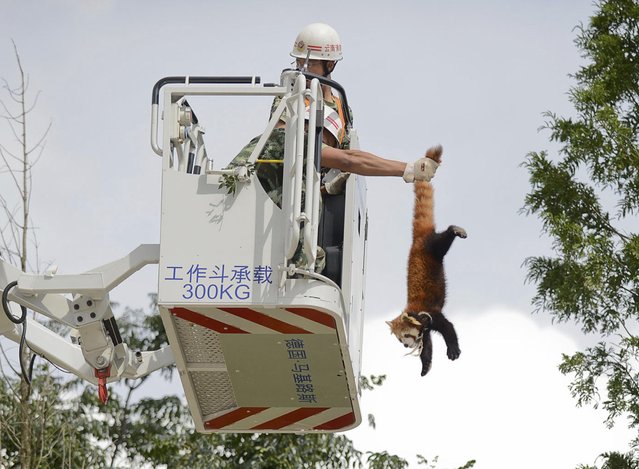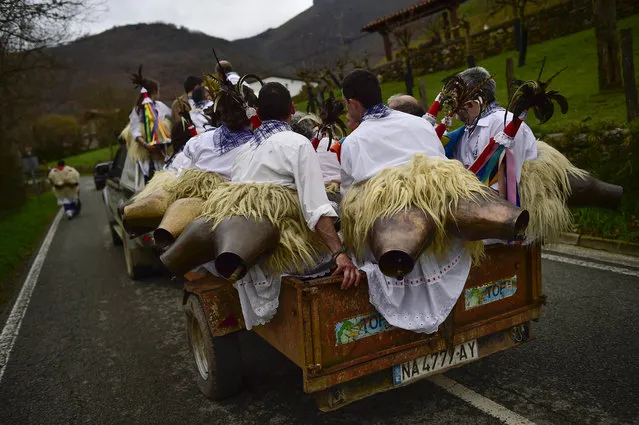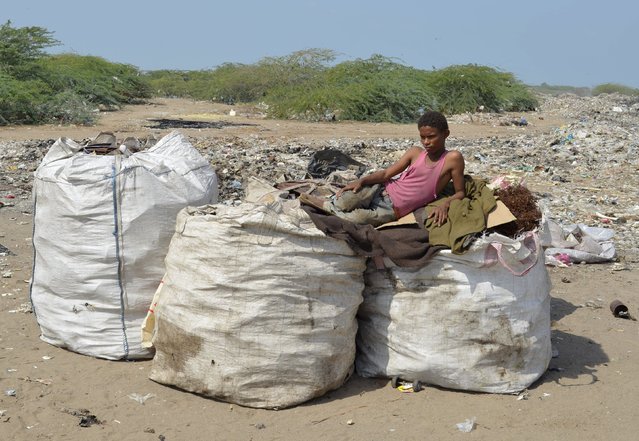
A firefighter holds a red panda (Ailurus fulgens) from its tail while removing it from a tree at a residential area in Kunming, Yunnan province, July 3, 2014. The animal was spotted in the residential area and was brought down from the tree after residents reported its sighting to the police, local media reported. (Photo by Reuters/Stringer)
05 Jul 2014 12:53:00,post received
0 comments







